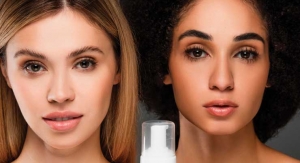Jennifer Famiano, Director, Industry Analyst, Beauty, Circana05.15.24
During holidays and special occasions, I love catching up with my cousins and their children, and I especially enjoy quizzing my cousins’ two daughters, ages 10 and 11, on their beauty routines. I keep up with them by following their TikTok and Instagram accounts, and what continues to astonish me are the similarities between the beauty products we all use.
Starting in late 2023, you probably noticed your social media feed being populated with videos of tweens perusing the aisles of Sephora and Ulta, excitedly pointing out beauty products for their holiday wish lists. From my own observations, not much changed in the first quarter; a recent trip to Sephora during spring break proved that Gen Alpha is still ever present and shopping for beauty products, with their moms in tow.
Social media content no doubt sways Gen Alpha with product usage and experimentation. But this is a generation less motivated by the education that fuels older cohorts, and more motivated by the thrill of the acquisition – the latter which is more like a game. It’s a game in which the consumer is looking purely at aesthetics, with the measure of success being an enviable “shelfie” for their “get ready with me” video showing off their “collection.”
As the beauty industry expands its focus to include our newest beauty enthusiasts, learning their shopping preferences and how to connect with them is going to be key to success with this group. Gen Alpha’s are young and so they are perhaps mimicking the interests of their Millennial parents. As they grow, they will develop their own preferences and opinions on what their skin needs and what brands match their values. Developing appropriate products, continued education, and positive engagement will be necessary focus areas.
Starting in late 2023, you probably noticed your social media feed being populated with videos of tweens perusing the aisles of Sephora and Ulta, excitedly pointing out beauty products for their holiday wish lists. From my own observations, not much changed in the first quarter; a recent trip to Sephora during spring break proved that Gen Alpha is still ever present and shopping for beauty products, with their moms in tow.
A Look at Gen Alpha
Gen Alpha, or children born between 2010 and today, often have Millennial parents and Gen Z siblings. As a parent to a Gen Z’er, I can tell you that children are maturing much faster than my generation did. They are coming of age during a time when they will not remember life without Siri or Alexa, and AI is progressing and changing not only how we shop, but how we learn and work.Millennials Are the Most Engaged
Millennials are the most engaged generation when it comes to skincare, according to Circana’s Female Facial Skincare Consumer Report. Furthermore, Circana’s receipt-based Checkout data indicates that prestige skincare buyers with a household income above $100,000 and with children in the household increased their year-over-year skincare spending by 10% and purchase frequency by 15% in the first two months of 2024. The number of buyers also significantly increased year-over-year. In the mass skincare market, the buyer increase is far less dramatic, up 2% in the first quarter. The faster growth rate among prestige buyers indicates that the Gen Alpha invasion is a trend that is focused on the higher end of the beauty market.Social media content no doubt sways Gen Alpha with product usage and experimentation. But this is a generation less motivated by the education that fuels older cohorts, and more motivated by the thrill of the acquisition – the latter which is more like a game. It’s a game in which the consumer is looking purely at aesthetics, with the measure of success being an enviable “shelfie” for their “get ready with me” video showing off their “collection.”
As the beauty industry expands its focus to include our newest beauty enthusiasts, learning their shopping preferences and how to connect with them is going to be key to success with this group. Gen Alpha’s are young and so they are perhaps mimicking the interests of their Millennial parents. As they grow, they will develop their own preferences and opinions on what their skin needs and what brands match their values. Developing appropriate products, continued education, and positive engagement will be necessary focus areas.



























